Learn how to incorporate herbs, flowers, essential oils, and other natural ingredients into melt and pour soap base, no handling of lye required!
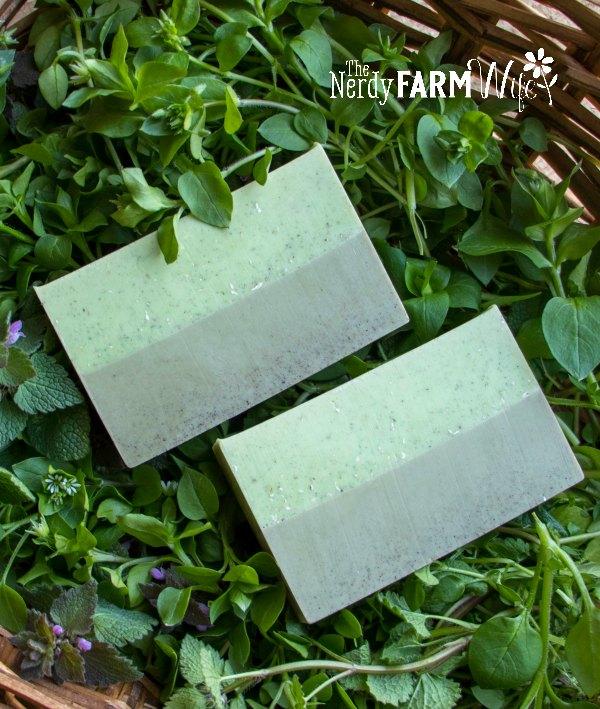
Possibly the most often expressed sentiment I hear when it comes to soap making, goes something like:
“I want to make soap, but I’m really scared of the lye!”
That is a completely justified fear and one that I shared for a very long time. It took months of research before I felt comfortable enough with the idea and even then, I had my husband handle it for the first few batches. (Here’s an article I wrote about why we need lye, so you can learn more about why it’s necessary for soapmaking.) If a complete chicken like myself can now handle lye like a pro, then you should be able to do so too, one day!
However, until you’re ready, or if you just aren’t interested into that kind of soap making – I’m here to tell you how to create your own unique herbal soaps, without handling the lye part. It’s so safe, your kids can help you!
Some links in this article are affiliate links. If you click on one and make a purchase, I earn a small commission for sending a customer their way.
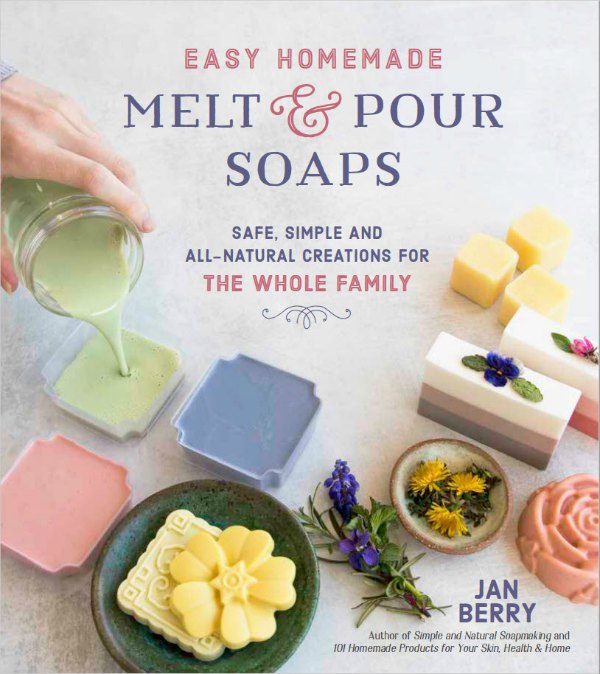
A Helpful Melt & Pour Resource
If you’re interested in combining natural colorants, essential oils, herbs, and flowers with melt and pour (glycerin) soap base – you’re going to love my new print book, Easy Homemade Melt & Pour Soaps – just released today!
It includes 50 fun recipes, design tutorials, and lots of helpful information on infusing soap base with herbs and flowers, and usage rates for natural colorants, essential oils, and other ingredients sourced from nature.
It’s available for order from your favorite local bookstore, Amazon, Barnes & Noble, Books-A-Million, IndieBound, Amazon UK, Amazon CA, Amazon AU, and wherever books are sold.
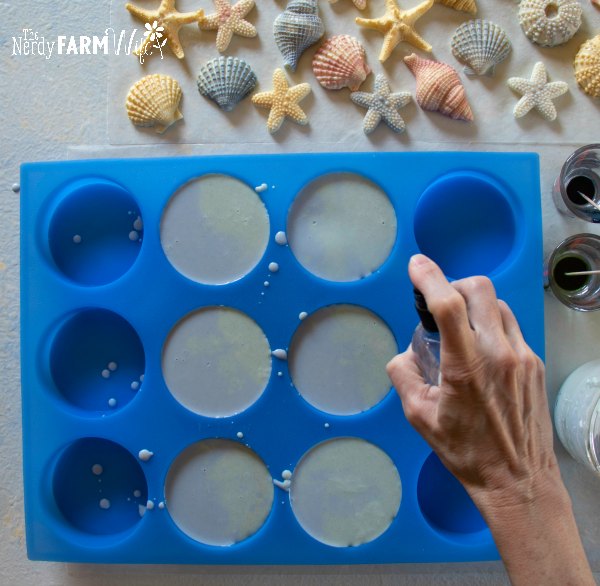
Gathering Supplies
To start making melt and pour soaps, you’ll need the following basics:
- a melt and pour soap base
- isopropyl (or rubbing) alcohol in a spray bottle
- heatproof 4-cup glass measuring cup or glass canning jars
- infrared or other thermometer
- soap molds (check my Amazon storefront for some of my favorite molds)
If you’re a palm-free soaper, look for SFIC’s Clear or White Palm Free Soap Bases at Soap Goods or Wholesale Supplies Plus. Those who aren’t palm-free may enjoy the somewhat more moisturizing SFIC’s Goat Milk, Cocoa Butter, or Shea Butter soap bases from one of those aforementioned places or Bulk Apothecary or Bramble Berry. (SFIC bases rank high in my eyes because their motto is: “As natural as we can make it” which appeals to my crunchy side, plus their bases feel nice on my skin.)
Other bases to try include Stephenson Donkey Milk, and Wholesale Supplies Plus DF (detergent free) Three Butter soap, and their DF Baby Buttermilk soap base.
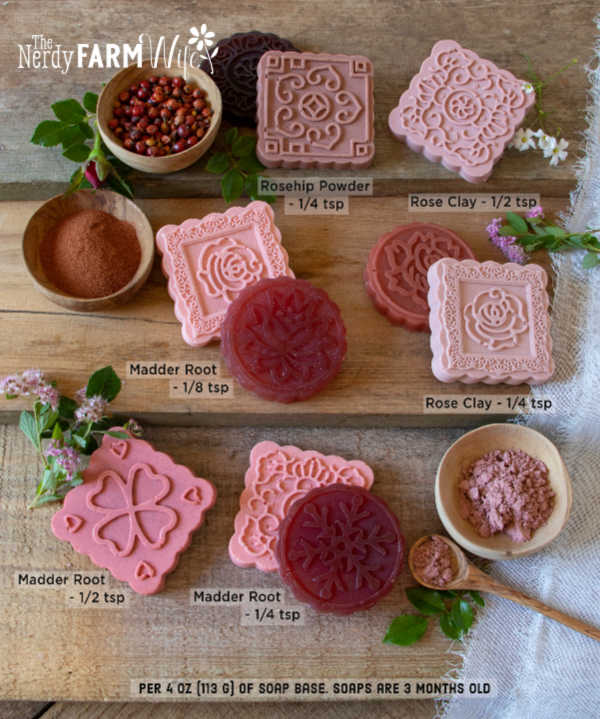
Don’t forget about adding natural colorants and essential oils for scent!
Before adding a natural colorant to soap, most will do best if you dilute them with about 2 to 3 times as much rubbing alcohol first.
Here are a few ideas for natural colorants. The amounts given are for 4 ounces of soap base:
Green: French green clay (1/2 tsp per 4 oz), chlorella powder (1/8 tsp per 4 oz)Yellow: lemon peel powder (1/2 tsp per 4 oz), saffron powder (just a tiny pinch)Orange: tomato powder (1/8 to 1/4 tsp per 4 oz), turmeric (1/8 tsp per 4 oz)Pink: madder root powder (1/8 to 1/2 tsp per 4 oz), rose clay (1/4 to 1/2 tsp per 4 oz)Blue: indigo powder or woad powder (1/8 to 1/4 tsp per 4 oz)
I also have several pages of helpful colorant samples in my print book, Easy Homemade Melt & Pour Soaps, as shown in the photo above.
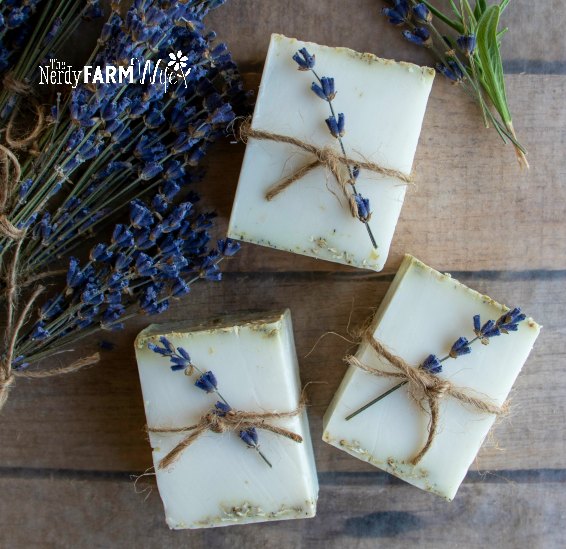
Essential oils can be used to add a lovely scent to your creations. (I love the high quality essential oils at Mountain Rose Herbs.)
Use EO Calc to determine the right amount for your projects.
Read more : Garrison: Tailoring Emporium Guide (WoD 6.2)
A few to choose from include:
- Lavender (Lavandula angustifolia) – gently skin soothing with a calming scent; suitable for all skin types
- Bergamot (Citrus bergamia) – an uplifting citrus-like scent with a hint of floral; nice for all skin types, especially dry skin
- Sweet Orange (Citrus sinensis) – has a bright cheerful citrus scent; balances all skin types, extra helpful for oily skin
- Cedarwood Himalayan (Cedrus deodara) – has a warm woodsy scent (and used to replace my former recommendation of Cedarwood Atlas (C. atlantica) which I learned is endangered)
If you’d like to add dried flower petals to melt and pour, it’s good to be aware that most will turn brown or discolor. Calendula petals will hold their color, and bachelor buttons (cornflower) will keep their pretty blue when sprinkled on top, but the rest won’t be attractive over time.
You can also infuse herbs and flowers directly into soap base!
This is my favorite thing to do with melt and pour. It’s a good way to let kids gain hands-on experience making herbal soaps, but they don’t have to handle lye or anything unsafe to do so.
I have an example of this technique shown in the Jewelweed Melt & Pour Soap recipe in my article, Preserving & Using Jewelweed. (Scroll down to #4 on the list.) Plus, of course, more examples and recipes in my Easy Homemade Melt & Pour Soaps book! 🙂
Other herbs to try infusing include:
- dandelion flowers & leaves
- violet leaves
- calendula
- chamomile
- plantain
The Fun Part – Making Soap
There are so many creative ways to use melt and pour soap base; I love that I can get my kids involved too!
Here’s a recipe from my new print book, Easy Homemade Melt & Pour Soaps.

Triple Aloe Bars
Featuring a one-two-three punch of aloe powder, aloe gel and aloe soap base, this soap has a creamy lather that leaves skin soft and smooth. Aloe is prized for its ability to soothe itchy, hot or inflamed skin conditions. Although you could add essential oils, I prefer this soap completely unscented, in keeping with its gentle nature that makes it suitable for sensitive skin.
Yield: five 3.25-ounce (92-g) soaps
Ingredients needed:
- ¼ tsp aloe vera powder
- ¼ tsp spirulina or chlorella powder, for color
- 1 tsp water
- 12 oz (340 g) aloe soap base, cut into 1″ (2.5-cm) cubes
- 4 oz (113 g) shea butter or goat’s milk soap base, cut into 1″ (2.5-cm) cubes
- ½ tsp arrowroot powder or cornstarch
- 2 tsp (10 ml) aloe vera gel
- 4-cavity mold (Bramble Berry succulent silicone mold pictured)
- Rubbing alcohol, for spritzing
Directions to make:
- In a heatproof 4-cup (1-L) glass measuring container, combine the aloe vera powder, spirulina, water, aloe soap base and shea butter soap base.
- Cover the top loosely with a heatproof saucer.
- Place the container in a saucepan containing a few inches (at least 5 cm) of water, forming a makeshift double boiler.
- Heat over medium-low heat until the soap is almost melted, 15 to 25 minutes, then lower the heat to low and infuse for an additional 20 minutes.
- While the soap heats, stir the arrowroot powder and aloe vera gel together until it’s very smooth, using a spoon to press out any lumps. This combination will add a creamy soothing bubbly feel to the finished soap.
- When the soap is fully melted, remove the container from the heat.
- Strain the infused soap base through a fine-mesh strainer into a clean container.
- Stir in the arrowroot mixture.
- Allow the hot soap to cool to around 135°F (57°C), stirring occasionally.
- Carefully pour the melted soap base into the molds and spray it with alcohol.
- Keep them in the molds until they’re completely cooled and hardened, 4 to 5 hours.
- Unmold the soaps and wrap them tightly. Store them in a cool, dry place.
This post – How to Make Herbal Soap Without Handling Lye {melt & pour} – was originally published September, 2013 and updated November, 2019.
Source: https://gardencourte.com
Categories: Recipe


